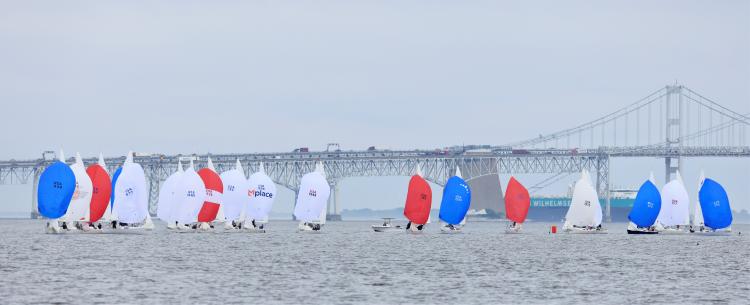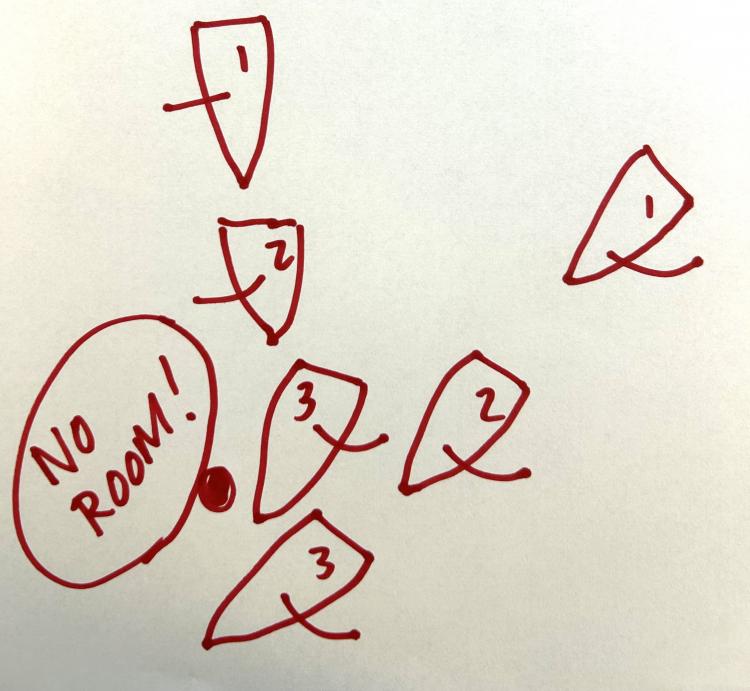What Racing Sailors Should Do To Best Prepare for Protests
Protests are generally not fun, but they are always opportunities for learning. Moreover, they are an important part of our sport. Many racing sailors are wary of the protest room, thinking, “It’s always a toss-up, even if I know I was right!”

But that’s not the case. There are ways to improve your chances. Clearly and concisely stating your case on a well-crafted protest form or request for redress is an important part of sharing your side of the incident with the Protest Committee. You want to walk the Protest Committee through your experience, highlighting key points along the way, that will help them identify the “facts found” that lead to conclusions and a decision supporting your experience.
Your protest/redress form, now called a Hearing Request Form (because it covers protests, requests for redress, and reopening of cases), is how the Protest Committee first gets to know your case. As in so many situations, first impressions definitely count. Here are some tips to make your form resonate with the Protest Committee.
Know what you’re getting into.
Before a regatta, make sure you know what information you need to fill out a Hearing Request Form. Perhaps this is part of an annual review of the Racing Rules of Sailing you do over the winter. The basic Hearing Request Form is available via sailing.org/racingrules: Scroll down to the “Online Rules Documents” section and select “Hearing Request Form.”
Things to bring to a regatta? Your rulebook, a notebook (for drafts), and good pencil.
When you arrive at a new regatta site, scope out where Hearing Request Forms for the regatta are located and where to file protests. Knowing where these are can save you precious minutes if you’re trying to file before the close of a protest time window.
Always, always, ALWAYS create a draft version of your Hearing Request Form before creating the clean copy that you file for the Protest Committee to use. Especially for your diagram, making sure you have it right before committing it to the formal version you will submit will ensure a legible copy for the committee to digest.
Do your homework.
Present yourself as expert in the situation. How windy was it, and from what direction? Was there current? How fast were you going—and what does that mean for how much distance you covered during the course of the incident? Being clear and consistent with this information can help the Protest Committee know you are well grounded in the facts of the incident—and inform development of your diagram and description.
Make sure you make it easy for the Protest Committee to follow your diagram and description. When creating your diagram, keep things consistent: The wind should always “blow” from the top of the page.

In writing your description, make it easy for the Protest Committee to follow your line of reasoning through to the answer you want to hear. Accurate, clear, and concise wins the day. Follow a “facts found,” conclusions, decision format. For example: “As we entered the zone to round the port gate, with both boats on port gybe, I looked up and the other boat’s mast was even with where I sit when I drive. Clearly, I had an inside overlap. The other boat did not give me room to sail the course, as she not only forced me into the mark but simultaneously caused contact between our boats. She violated Rule 18.2. She should be disqualified from this race.”
Make sure your description and diagram “match”—that how you describe the incident in the description mirrors what is shown in the diagram (and vice versa).
Elemental but critical: Make sure your document is legible! If handwritten, use your good handwriting. Use a pen or pencil that won’t smudge, and keep your form clean and dry.
Tie a bow on it.
You’ve done the hard work, but make sure to take care of some final details. Get your form in by the deadline, and make sure you have a copy. If you are submitting an electronic version, you’ll have a copy, but be sure you have your diagram, too. If you are submitting a hard copy and there is no copy machine available, be sure to hang on to your draft version for reference.
Having witnesses can really bolster your side of the case. Before locking in any fellow sailors to witness for you, make sure that they would represent what you represent—that they would indeed be good witnesses for you. If they are a good match, make sure you have their contact information so you can text them updates on where and when to be for the hearing.
When and where your protest/redress will be heard will be posted on the notice board, whether on site or virtual. Don’t just be on time, be early.
These tips can help you prepare yourself—and the Protest Committee—for the facts you’ll share during your testimony at a hearing. Next month: Tips for your time in the protest room.
About the Author: Kim Couranz has earned several national and world titles in Laser Radials (ILCA 6), Snipes, and Lightnings. She has also raced J/22s, J/24s, and Ynglings on an international level.
Find the second-part of this two-part "protest" series here.




